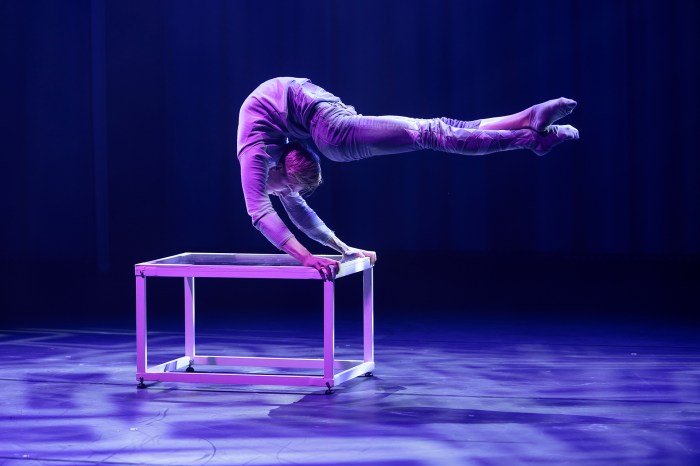For ages, arachnids have spun their silk of fascination through our imaginations, movies, and literature — think of E.B. White’s classic book “Charlotte’s Web” and the pop culture phenom that is Marvel’s Spider-Man. And when you learn more about their real life power to survive in all types of environments — ranging from deserts to rain forests to urban centers like New York — it’s not hard to gain an even deeper appreciation for these animals.
In the latest exhibit at the American Museum of Natural History, “Spiders Alive!,” you can learn what the museum’s researchers have discovered about these creatures, their anatomy, and defense mechanisms. In addition to displaying arachnids from the museum’s vast collection, the exhibit includes an opportunity to see museum staff handling live specimens and to see these creatures up close.
“Spiders Alive!” does an excellent job of explaining — in an entertaining way — various spiders’ biology, habitats, and how they impact human life. You will also gain insight into how the museum researchers study spiders.
I had the chance to discuss the exhibit with Hazel Davies, the associate director of Live Exhibits at the American Museum of Natural History:
Shnieka Johnson: This is a second run for “Spiders Alive!” How is it different from the last exhibit?
Hazel Davies: It’s pretty much the same. The first run was a big success, so there was no reason to change. There is one different species of spider, the funnel-web grass spider.
SJ: Where were samples of the various species collected by researchers? How did the museum acquire the live specimens on view?
HD: The live exhibits collection is very different and separate from the research collection. The species for the exhibit came from several sources. As many as possible were bought from breeders in the hobby, for example, all 17 Chilean rose hair tarantulas… Some were sent by researchers who had them spare, and some were collected because they are so seasonal, living less than a year, just a couple are taken from areas with high population densities. None of them are endangered species.
SJ: This is considered a hands-on exhibit? What are some of the hands-on components?
HD: It’s not exactly “hands on” — no [visitor] touches the spiders. It’s interactive in that you can get nose-to-nose with many species, some of them very large. The presentation area is the main feature where staff have a live tarantula and scorpion in open containers and use a magnifying camera to point out their features and explain anatomy and natural history. Visitors get to ask questions and learn a lot. There is a big climbable model so younger kids can really explore the features of spider’s bodies — that is hands on.
SJ: How can parents use this exhibit to teach children about spiders and minimize their fear of them?
HD: Most people are afraid of things they don’t really understand, and this exhibit goes a long way towards educating young and old alike about spider’s lives and how they are beneficial to humans.
Yes, spiders are venomous, but less than one percent of all species pose any problem to humans, and you can see two of those species in the exhibit and learn how to distinguish them. The exhibit explains how spiders really just want to hide, they don’t want to have to interact with humans, and will only bother you if you really bother them.
They keep insect populations under control — without spiders we would be overrun with many insect species that could affect agriculture. So having spiders around your home and garden is a good thing. The exhibit also introduces you to really cool facts about spider webs, hunting strategies, adaptations, and behavior. When children see how fascinating spiders are, most in the exhibit think they are really cool and want to get as close as they can to the ones at the presentation area.
• • •
Spiders Alive! exhibit at the American Museum of Natural History [Central Park West and W. 79th Street on the Upper West Side, (212) 769–5100, amnh.org]. Now through Nov. 2.
Shnieka Johnson is an education consultant and freelance writer. She is based in Manhattan where she resides with her husband and son. Contact her via her website: www.shniekajohnson.com.



















